Best Hypoallergenic Baby Formulas (2024 Guide)
This post may contain affiliate links. As an Amazon Associate, I earn from qualifying purchases. Please read my disclosure.This in-depth, parent-friendly guide will help you find and buy the best hypoallergenic baby formulas. You will learn what types of HA baby formulas are available, what ingredients to avoid in formula, and where you can reliably purchase the best hypoallergenic formula. I update this post monthly to ensure that all of the information below is recent and accurate!
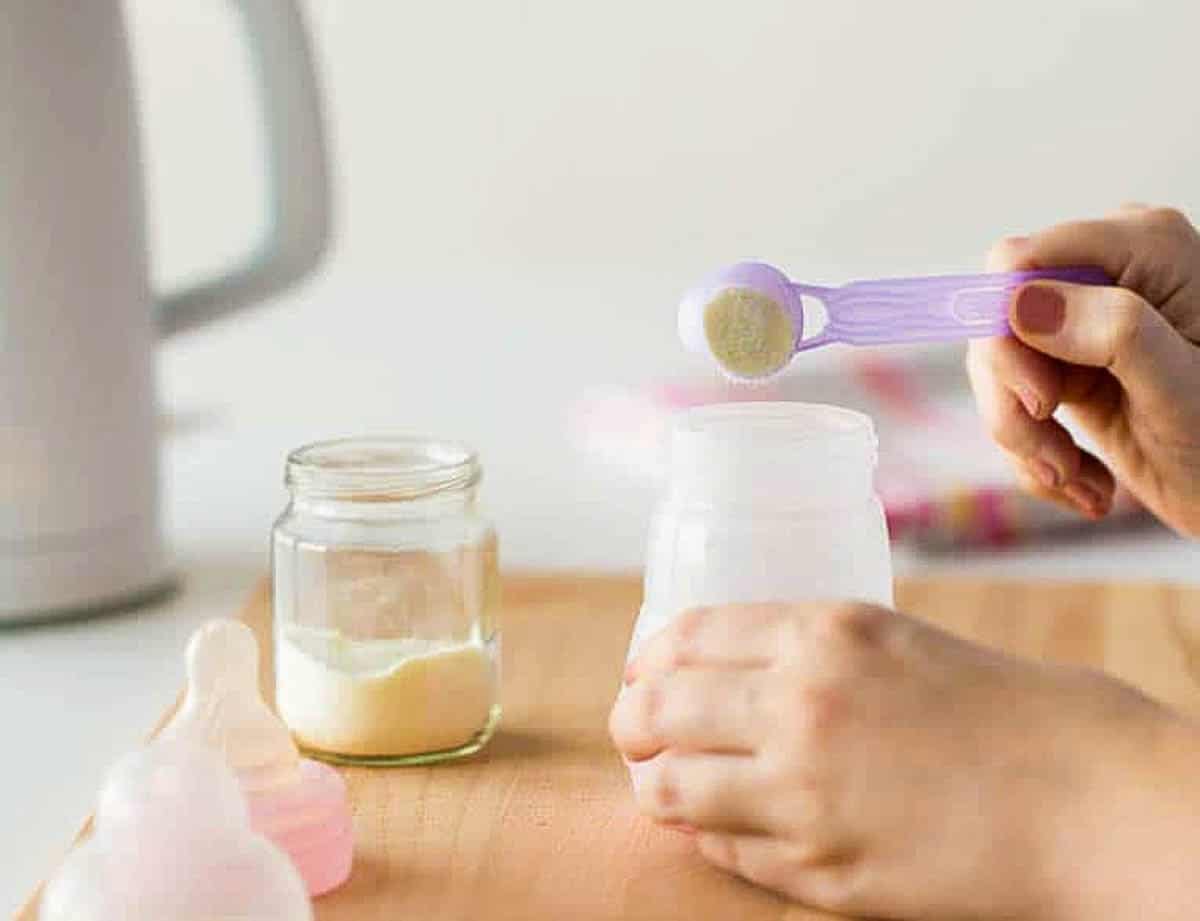
Finding the safest and healthiest formula for your baby can be a stressful process! I’ve heard from many of you that my guide to the best organic baby formula has been helpful in making that process a bit easier.
But navigating the world of hypoallergenic formulas can be even more stressful – because on top of trying to find a healthy solution, you know that your baby is getting sick from the milk protein in regular formula!
I was lucky enough to have two kids who didn’t have any allergies, but I have talked to so many moms who are frustrated with the lack of options for healthy, safe, organic, hypoallergenic baby formulas. So that’s why I created this guide, based on my extensive knowledge as a parent, certified health coach and nutritionist, and hundreds of hours working with families and researching infant formula!
A Disclaimer & Our Methodology
As a board certified health coach and certified nutritionist, I support products and ingredients that are rooted in science and are evidence-based. Using my background in nutrition, along with extensive research (see below for details), consultations with experts, and my own personal experience giving my two kids formula, I was able to arrive at this list of the best hypoallergenic formulas in this guide. This post has also been medically reviewed and fact checked by Linzy Ziegelbaum, MS, RD, CDN (see my about page for more info about Linzy).
My hypoallergenic formula recommendations are based on:
- Over 200 hours of extensive research
- Speaking with thousands of parents on what has worked for their children
- Reviewing the manufacturer’s claims and ingredients list, stages, and varieties of over 65 different formula brands
- Speaking with doctors and pediatricians
- Reviewing countless articles and peer-reviewed studies.
Though I may receive a commission (at no extra expense to you) if you purchase through some of the affiliate links provided, I only recommend products I’ve researched, evaluated, consulted experts on, and would feel comfortable giving to my own two children.
As always, I only share products that are the highest quality and that can help you and your family the most. By purchasing any of these products from the links below, you help keep this blog running, so thanks for your support!
Keep in mind that every baby & situation is different, so when it comes to choosing a baby formula, please consult with your pediatrician first before starting or switching to a new formula. My recommendations are not a substitute for professional medical advice, diagnosis, or treatment.
What Is A Hypoallergenic Formula?
A hypoallergenic baby formula is one that’s specifically designed for babies who have a cow’s milk protein allergy, who have trouble digesting cow’s milk, or have other milk or lactose sensitivities.
The reason they’re called “hypoallergenic” is because they’re made with hydrolyzed milk proteins, which are designed to minimize the risk of allergic reactions in infants. “Hydrolyzed” means that the milk proteins are broken down into smaller pieces (essentially, partially digested), which is what makes them easier for babies to digest and less likely to trigger a reaction.
This is why they’re often recommended by pediatricians or healthcare professionals when there are concerns about a baby’s ability to tolerate standard infant formula.
The extensiveness of hydrolyzed proteins needed (how broken down the proteins are) depends on how severe your baby’s allergy or intolerance is.
The American Academy of Pediatrics has strict guidelines for what constitutes a hypoallergenic formula including:
- The formula must be studied in a clinical trial
- The formula must be studied with infants who have a cow’s milk allergy
Hypoallergenic formulas are typically more expensive than regular infant formulas, and they should only be used under the guidance of a healthcare professional. If you suspect your baby has allergies or digestive issues, consult with your pediatrician or a pediatric allergist to determine the most appropriate formula for your baby’s specific needs.
What Are The Different Types Of Hypoallergenic Formulas?
Hypoallergenic baby formulas typically fall into six main categories – let’s take a look at each in detail:
Partially Hydrolyzed Formulas
These formulas contain cow’s milk proteins that have been partially broken down (hydrolyzed) into medium to smaller fragments. This makes them easier for some babies to digest and reduces the risk of allergic reactions compared to intact proteins found in regular milk-based formulas.
They are usually recommended for babies with mild to moderate allergies or digestive sensitivities, but can still trigger an allergic reaction in babies who have a more severe allergy to cow’s milk.
Extensively Hydrolyzed Formulas
These are considered truly hypoallergenic, and are meant to be tolerated by 90% of infants. They are made for infants who can’t digest or are allergic to intact cow’s milk protein. These formulas contain proteins that have been extensively broken down into very small fragments.
Because the casein (the cow’s milk protein) is in such small pieces, this further reduces the risk of allergic reactions and is often recommended for babies with severe allergies or conditions like cow’s milk protein allergy (CMPA).
Amino Acid Based Formulas
These types of formulas are 100% hypoallergenic. Amino acid-based formulas don’t contain even extensively hydrolyzed proteins or any partially whole protein molecules at all. Instead, they break down the proteins into their building blocks – called amino acids.
Because they contain individual amino acids instead of whole proteins, these are the most hypoallergenic formulas you can find. Amino acid-based formulas are the most expensive, and therefore are usually recommended for babies with severe allergies, or who cannot tolerate other types of hypoallergenic formulas.
Vegan Baby Formulas
This is an interesting, newer category on the market. Vegan baby formulas are 100% dairy free, and are made with alternative proteins like pea protein or brown rice protein. This means they contain no milk proteins at all, and may be suitable for babies with a milk protein allergy or sensitivity, provided your baby doesn’t have allergies to other foods like peas or brown rice. (Learn More: Best Vegan Baby Formula).
Soy Formulas
While these are an alternative to cow’s milk formulas, 8-14% of infants with a cow’s milk allergy will react to soy. On top of that, too much soy for infants hasn’t been studied in terms of its long term effects – so I don’t like recommending soy-based formulas, especially non-organic soy formula, for babies with a cow’s milk protein allergy.
Goat Milk Formulas
This can be a good option if your baby has a cow’s milk sensitivity vs. a diagnosed cow’s milk protein allergy. Goat milk formulas will not work for babies with CMPA, but they can work for babies who just have a milder cow’s milk sensitivity. Goat milk contains A2 casein proteins instead of the A1 proteins found in cow’s milk, which can make it easier to digest and tolerate for some babies.
For Goat Milk formulas, I’d recommend: Kendamil Goat, Kabrita USA or Holle Goat. For more details on goat milk formula, check out this guide to the best goat milk formula and this guide comparing goat milk formula vs cow milk formula.
How Do I Know If My Baby Needs A Hypoallergenic Formula?
Determining whether your baby needs a hypoallergenic formula is typically based on the guidance of a healthcare professional, such as your pediatrician or a pediatric allergist. Their assessment is based on specific symptoms that may indicate an allergy or intolerance to standard infant formula. Here are some key signs and situations that may indicate a need for a HA formula (source 1 – NIH, source 2 – American Academy of Pediatrics):
- Skin Issues: If your baby experiences symptoms of an allergic reaction after consuming regular infant formula, such as hives, eczema, rashes, swelling, etc. it could be a sign of an allergy.
- Digestive Issues And/Or Reflux: Babies with gastrointestinal issues like excessive gas, chronic diarrhea, vomiting, constipation, bloody stools, or severe reflux, may benefit from hypoallergenic formulas, as these issues can sometimes be associated with food allergies or intolerances.
- Respiratory Problems: Wheezing, coughing, or difficulty breathing may also be signs of an allergic reaction, although these symptoms can also be caused by other conditions.
- Failure To Thrive: If your baby is not gaining weight or growing as expected, it could be due to their inability to properly digest the proteins in regular formula.
- Fussiness Or Colic: While fussiness is common in babies, excessive fussiness or colic, especially after feeding, might suggest an issue with the formula.
- Family History Of Allergies: If there is a strong family history of allergies, particularly to cow’s milk protein or other common allergens, your baby may be at an increased risk of developing allergies or sensitivities.
- Continued Symptoms Despite Other Interventions: If your baby’s symptoms persist or worsen despite other interventions, such as changing your diet (if breastfeeding) or switching to a different standard infant formula, it may be an indication that a hypoallergenic formula is needed.
- Medical Diagnosis: In some cases, a healthcare professional may diagnose your baby with a specific condition, such as cow’s milk protein allergy (CMPA), which often requires the use of hypoallergenic formula as part of the treatment plan.
Features And Ingredients To Look For When Choosing A HA Formula
When choosing a hypoallergenic formula for your baby, you should look for formulas that are specifically designed to be hypoallergenic and have the cleanest ingredients list possible.
Keep in mind that since HA formulas have broken down milk proteins and also tend to have reduced lactose, they often have to add in another carbohydrates to meet the nutritional requirements for infants.
Because of that, it’s nearly impossible to find an HA formula that is “perfect” – e.g. that has zero additives and zero added sugars or starches, but the key is to look for the formulas that minimize the use of fillers and really tend towards all-natural ingredients as much as possible. Here are some key ingredients and features to consider when selecting a hypoallergenic formula:
✅ Certified Organic (either USDA or EU Certified) or at least Non-GMO
✅ Meets nutritional standards for babies (in the US or the EU) and includes key vitamins and minerals for development (Note: requirements are different in the US and EU for both iron and DHA).
✅ No sugar, sucrose, or syrup solids (or minimal use)
✅ Includes Omega 3 Fats (DHA, ALA) and Omega 6 fatty acids (ARA, LA)
✅ Includes prebiotics and probiotics (Learn More: Prebiotics For Kids)
✅ Gluten free, soy free (with the exception of organic soybean oil, and organic soy lecithin, which is ok)
✅ Palm oil free (or uses palmitic acid, or sustainable palm oil. Learn more: Palm Oil In Baby Formula)
✅ No carrageenan
✅ No maltodextrin
✅ Mixes easily, and with a taste babies can tolerate (based on reviews)
✅ Suits your budget
Ingredients To Avoid
❌ Processed Refined Sugars (Syrup, Syrup Solids): Corn syrup solids (glucose syrup solids), sugar, or brown rice syrup.
❌ Maltodextrin Or Other Added Starches: A partially hydrolyzed starch derived from corn, rice, or potatoes.
❌ Carrageenan: Typically added as a stabilizer to ready-to-feed formula in the US; it is not allowed in the EU and has been linked to intestinal inflammation.
❌ Palm Oil: to mirror the levels of palmitic acid, which is found in breastmilk, some manufacturers add palm oil. The problem is that palm oil in formula does not act the same way that palmitic acid does in the baby’s gut. Palm oil reacts with calcium, and causes the formation of “soaps” in the baby’s intestines (which can cause digestive issues). Palm oil is in most formulas (EU & US), but more manufacturers are now making formula without it.
❌ GMO Ingredients: Ingredients that are GMO may have had the use of pesticides or antibiotics during the growing process.
❌ Soy: Soy protein (and soy formula) are problematic for infants because of their phytoestrogen content (check out this study about soy).
Below, I have listed the best hypoallergenic baby formula on the market today, followed by more details on each. Click on the formula name to go to the best online retailer of the formula.
The Best Hypoallergenic Baby Formulas
While no hypoallergenic formula is perfect, the hypoallergenic baby formulas below are considerably better than the rest. You can click on the formula name in the table below to find the best online retailer of the formula. We have organized the formula by type, from partially hydrolyzed to extensively hydrolyzed, and have included more alternative formula options (vegan, goat milk, etc) as well!
Partially Hydrolyzed Formulas
These formulas are all partially hydrolyzed, which means their milk proteins are broken down but are still detectable for babies with severe allergies. We have listed these formulas in order of preference, based on their ingredients, since all of them are about the same in terms of hydrolyzation.
HiPP HA PRE
HiPP HA formula comes in 3 stages: Stage PRE, Stage 1, and Stage 2. Besides the age ranges these stages are designed for, there are slight differences in ingredients as well, so we have listed them separately here. HiPP German Stage PRE formula is a complete nutrition suitable for infants from birth up to six months of age and specifically designed hypoallergenic with extensively hydrolyzed whey protein (86-87% broken down). It doesn’t contain casein (100:0 ratio), but it does not have a reduced lactose content. The main difference between HA PRE and HA Stage 1/2 is that PRE has no starch added.
Try This Formula If: Your baby has a cow’s milk allergy or sensitivity and you haven’t tried another hypoallergenic option (or you’re trying to move away from the US hypoallergenic options because of concerns over ingredients). Has extensively hydrolyzed protein, (86-87% broken down), 100% whey (no casein), no starch, but with the same lactose content as a non-hypoallergenic baby formula.
Cost: $42.99 for a 600 gram box.
For any of the Dutch or German formulas, their labels may not always come with an English translation, so we have partnered with Bottles & Burps to provide you with detailed guides for all of the non-UK based hypoallergenic baby formulas! Here is the guide for HiPP HA PRE – for translated nutritional labels, ingredients and preparation instructions so it’s easy to compare to any US based formulas.
You can also get 20% off any single pack at Bottles & Burps using the code PICKYEATER20! (just enter it manually in the checkout process!)
Pros
Cons
HiPP HA Stage 1
HiPP hypoallergenic formula (Stage 1) is meant for babies aged 0-6 months, and is nutritionally similar to HiPP PRE. Note that all European hypoallergenic formulas and US hypoallergenic formulas contain hydrolyzed milk proteins, which cannot be certified as organic due to strict EU regulations. However, all the other ingredients in HiPP HA (for all stages) are organic. Just like HiPP PRE, this Stage 1 HA formula has extensively hydrolyzed whey protein (86-87% broken down), no casein, and a regular lactose content.
Try This Formula If: Your baby has a cow’s milk allergy or sensitivity, you want a formula that you can use up to 6 months of age, and you haven’t tried another hypoallergenic option (or you’re trying to move away from the US hypoallergenic options because of concerns over ingredients).
Cost: $39.99 for a 600 gram box.
Translated Nutritional Information: HiPP HA Stage 1
Pros
Cons
HiPP HA Stage 2
HiPP HA Stage 2 is designed for babies aged 6 months and older, and can be used on its own as a breast milk substitute or a supplement for breastfeeding. Like HiPP HA Stage PRE and Stage 1, Stage 2 also uses lactose as the primary carbohydrate and has the same amount of lactose as regular formulas. It is also 86-87% hydrolyzed, with no casein. If your baby has been doing well on HiPP HA Stage 1, it makes sense to transition to Stage 2 once your baby turns 6 months old.
Try This Formula If: Your baby is over 6 months of age, has a cow’s milk allergy or sensitivity and you haven’t tried another hypoallergenic option or are moving up from HA Stage 1 (or you’re trying to move away from the US hypoallergenic options because of concerns over ingredients).
Cost: $40.99 for a 600 gram box.
Translated Nutritional Information: HiPP HA Stage 2
Pros
Cons
HiPP HA Dutch (Stage 1 & 2)
HiPP HA now comes in its Dutch formulation! Ingredients wise, it’s basically identical to the HiPP German HA formula, now that the German HA formula doesn’t include starch. The main difference is that the Dutch formulation comes in a larger, stackable container (vs. the smaller cardboard box for the German version). Stage 1 is suitable for babies aged 0-6 months, Stage 2 is for babies 6-12 months.
Try This Formula If: Your baby has a cow’s milk allergy or sensitivity and you haven’t tried another hypoallergenic option and you want a starch-free higher protein HA formula. Has extensively hydrolyzed protein, (86-87% broken down), 100% whey (no casein), and the same lactose content as a non-hypoallergenic baby formula.
Cost: $62.99 for an 800 gram can.
Translated Nutritional Information: HiPP Dutch HA Stage 1, HiPP Dutch HA Stage 2
Pros
Cons
Bobbie Organic Gentle Infant Formula
Bobbie Organic Gentle Formula is the first USDA and EU Organic sensitive formula made with 100% lactose carbohydrates. It contains partially hydrolyzed milk proteins, no synthetic ingredients, and is the most affordable gentle formula I’ve found on the market today!
Try This Formula If: You need a gentle cow’s milk formula for your baby, and your baby doesn’t have a diagnosed cow’s milk protein sensitivity or allergy. Bobbie Organic Gentle Formula is the only US-manufactured tolerance infant formula designed for infants with fussiness, gas and crying that is formulated to support easy digestion, with 100% partially hydrolyzed whey as the protein source and 100% lactose as the carbohydrate source, like that found in breast milk. Bobbie Gentle Formula is not hypoallergenic, according to US requirements, but is similar to EU hydrolyzed formulas which are considered hypoallergenic by EU standards. It is also palm oil free and does not have any soy allergens.
Cost: $28 for a 400 gram can.
Pros
Cons
Extensively Hydrolyzed Formulas
We have listed these formulas in order of least hydrolyzed (86% with HiPP Comfort) to most hydrolyzed (100% with Gerber HA). Each of these formulas have different pros and cons, which is why we haven’t listed them in order of recommendation – since each one could be the best fit for your baby depending on their needs.
HiPP Comfort
HiPP Comfort is most similar to a US extensively hydrolyzed hypoallergenic formula. While it’s similar to HiPP HA in that it contains 86-87% hydrolyzed milk proteins and no casein, it’s even more allergen friendly because it has a reduced lactose content and modified fats for even easier digestion. (Learn More: Lactose Free Baby Formula).
HiPP Comfort just has “one stage” in that it’s suitable for babies aged 0-12 months! While HiPP Comfort formula cannot be certified as organic because the hydrolyzed milk protein is not available in organic form, the majority of the other ingredients in this formula are organic, and all ingredients are non GMO.
What’s interesting about HiPP Comfort is that while, in formulation, it is the closest to a US hypoallergenic formula and is more broken down than HiPP HA, it’s technically not labeled as a hypoallergenic formula in the EU for regulatory reasons. Comfort is typically indicated for gassiness, colic and constipation. (Learn More: Best Formula For Gassy Babies). We do, in practice, find that parents seeking a “hypoallergenic” formula have been successful with Comfort. So for those who have babies with sensitive tummies, or who react to both whey and casein, this may be the baby formula for you!
Try This Formula If: Your baby has a cow’s milk allergy or sensitivity and HiPP HA hasn’t worked. You can also go straight to this formula if your baby’s symptoms seem more severe, since this formula is going to be more gentle than the HA formulas listed above.
Cost: $39.99 for a 600 gram box.
Translated Nutritional Information: HiPP Comfort
Pros
Cons
Alimentum® Ready to Feed
All of the US hypoallergenic formulas are more extensively hydrolyzed than the European options listed above (HiPP HA and HiPP Comfort). Common extensively hydrolyzed formulas in the US include Alimentum® or Nutramigen®, which are about 93% hydrolyzed. The ready to feed versions have slightly different ingredients than the powdered versions so we have listed them separately here. But if your baby tolerates HA or Comfort I would choose those over Alimentum/Nutramigen given that the ingredients list is cleaner. However, if HA or Comfort don’t work, then you have to move to a more hydrolyzed formula like the US options listed here.
Try This Formula If: Your baby has a cow’s milk protein allergy, HiPP HA and Comfort have not worked, and you are looking for an option with less sugar (and you’re not as concerned about carrageenan). RTF Alimentum includes carrageenan, powdered Alimentum does not. Carrageenan is a food stabilizer and thickener which can cause inflammation in the body. Between the two versions of Alimentum it’s a tradeoff with more sugar and no carrageenan vs. less sugar and added carrageenan.
Cost: $66.86 for a pack of (6) 32 fluid oz bottles.
Pros
Cons
Similac Alimentum® (Powdered)
Similac Alimentum® powdered formula is very similar to the ready to feed formula with just a slight difference in certain stabilizing ingredients and the amount of sugar included. This version is also extensively hydrolyzed (93%) making it suitable for babies with cow’s milk protein allergies or lactose sensitivities.
Try This Formula If: Your baby has a cow’s milk protein allergy and/or HiPP HA and Comfort have not worked, and you prefer a powdered formula vs. ready to feed. Keep in mind the powdered version has much higher sugar, but no carrageenan compared to the RTF version.
Cost: $36.49 for a 12.1oz can
Pros
Cons
Nutramigen® Ready to Feed
Enfamil Nutramigen is very similar to the RTF version of Alimentum with the exception of prebiotics (Alimentum has it, but the RTF version of Nutramigen does not). However, the ready to feed version of Nutramigen does contain way less sugar than the powdered version, and is extensively hydrolyzed so it’s suitable for babies with cow’s milk protein allergies or lactose intolerance.
Try This Formula If: Your baby has a cow’s milk protein allergy, HiPP HA and Comfort have not worked, you are looking for an option with less sugar, you’re not as concerned about carrageenan, and you can’t find the RTF version of Alimentum.
Cost: $102 for a (6) pack of 32oz bottles.
Pros
Cons
Enfamil Nutramigen® (Powdered)
The powdered version of Nutramigen is almost identical to the powdered version of Alimentum. They are pretty interchangeable and have similar pros & cons. It’s 93% hydrolyzed, works for CMPA or lactose intolerance. In clinical studies, infants showed improvement after just 48 hours of being on this formula. (Learn More: HiPP HA vs. Nutramigen).
Try This Formula If: You have tried HiPP HA and HiPP Comfort and neither have worked, and/or your baby has a cow’s milk protein allergy. Also worth trying if you can’t find the powdered version of Alimentum, as this is a very similar formula.
Cost: $37.80 for a 12.6oz can
Pros
Cons
Gerber Extensive HA
This formula is 100% hydrolyzed, so it’s even more broken down than Alimentum / Nutramigen, and is the most extensively hydrolyzed formula I’ve found on the market today. It contains 100% whey protein broken down into tiny pieces designed to be well-tolerated by most babies with CMPA and ultra-filtered for low residual allergenicity. It’s also a lactose-free formula, so it covers most milk related allergies out there! It also happens to be Non-GMO – which is a huge plus since most US hypoallergenic formulas are not.
Try This Formula If: You need a 100% extensively hydrolyzed formula. You have tried HiPP HA and HiPP Comfort and neither have worked, and your baby has a cow’s milk protein allergy.
Cost: $32.29 for a 14.1 oz can.
Pros
Cons
Amino Acid Based Formulas
There are really only two amino acid based formulas in the US, and they’re pretty equivalent in terms of ingredients. The main issue with both has been availability and price, so if your pediatrician has recommended an amino acid based formula, your best bet is to just choose the one that’s most budget friendly and easy to find! Additional considerations are – picking the one your baby tolerates the most and the one that tastes the best.
Neocate®
Neocate® is 100% hypoallergenic and is made up of amino acids exclusively. It is considered a medical food, and should only be used under the supervision / recommendation of your child’s pediatrician. In clinical studies, Neocate® has been shown to reduce allergic reactions and CMPA symptoms within 3-14 days.
Try This Formula If: Your pediatrician has specifically suggested that you use an amino acid based formula and/or you have tried the other formulas on this list and your baby is still having digestive issues (indicative of a more severe cow’s milk allergy).
Cost: $44.5 for a 14.1 oz can
Pros
Cons
EleCare®
EleCare® is a hypoallergenic, amino acid based formula, similar to Neocate®. It is made with 100% free amino acids as the protein source for infants who cannot tolerate intact or hydrolyzed protein.
Try This Formula If: Your pediatrician has specifically suggested that you use an amino acid based formula and/or you have tried the other formulas on this list and your baby is still having digestive issues (indicative of a more severe cow’s milk allergy).
Cost: $43.69 for a 14.1 oz can.
Pros
Cons
Vegan Baby Formulas
There are only a couple of high quality, organic, vegan formulas that are suitable for infants on the market today. These are our top 2 picks for dairy free baby formulas that may work for an infant with a milk protein allergy. You can see all of the options for vegan baby formulas in our linked guide!
Bebe M Stages 1-3
Bebe M (Bebe Mandorle) Organic Rice-Based Infant Formula is 100% organic, and suitable from birth until 12 months of age (Stage 1 is from 0-6 months, Stage 2 from 6-9 months, Stage 3 from 10 months – 3 years of age!).
It uses 100% plant-based ingredients that are tightly regulated by the EU, designed to meet the nutritional requirements for babies. It is made from an organic rice protein hydrolysate, which makes it a dairy-free formula that’s vegan friendly, but is also suitable for babies with dairy allergies or lactose intolerance. It also contains no palm oil and has a super clean ingredients list! (Learn more: Palm Oil In Baby Formula).
Try This Formula If: Your baby seems to have a cow’s milk allergy, and you want to try an organic formula to meet your baby’s nutritional requirements, and your baby doesn’t have an allergy to brown rice proteins.
Note: This product is labeled as “Foods for special medical purposes (FSMPs)” and should be only given under medical supervision. Please consult your pediatrician before introducing this formula to your baby.
Cost: $64.99 for a 600 gram can.
Pros
Cons
Premibio® Organic Vegan Stages 1-3
Premibio® Organic Rice-Based Infant Formula is 100% organic, and suitable from birth until 12 months of age (comes in 3 stages, just like Bebe M above).
This is a lactose-free and vegan formula based on hydrolyzed rice protein, and is also gluten-free and palm oil free. It uses 100% plant-based ingredients, and meets the nutritional requirements for babies for growth and development. Because it is dairy free, it can be suitable for babies with a lactose or cow’s milk allergy.
Try This Formula If: Your baby seems to have a cow’s milk allergy, and you want to try an organic formula to meet your baby’s nutritional requirements, you want a cheaper alternative to Bebe M, and your baby doesn’t have an allergy to brown rice proteins. Please consult your pediatrician before introducing this formula to your baby.
Cost: $49.99 for a 600 gram can.
Pros
Cons
Goat Milk And A2 Protein Formulas
There are quite a few different goat milk and A2 milk protein formulas on the market today. We have just short listed the top 5 here, but you can learn more about goat milk formulas and A2 baby formulas in our linked guides. These can be good options for babies with a mild cow’s milk sensitivity, but not a diagnosed cow’s milk protein allergy (as babies with a severe allergy may still react to goat milk proteins).
Jovie Goat Milk Formula
A great option for a goat milk formula, Jovie is made in the Netherlands, and is committed to producing high quality, 100% organic whole goat milk formulas that meets babies and toddlers nutritional needs. Since it’s made with whole goat milk, it contains only A2 casein milk protein, which is easier to digest for babies and may be less reactive for infants with sensitive digestive systems. Comes in 3 stages – Stage 1 is from birth to 6 months, Stage 2 from 6-12 months of age, and Stage 3 for age 1+.
Try This Formula If: Your baby has a cow’s milk sensitivity, but not a diagnosed cow’s milk allergy. Goat milk formula is easier to digest because goat milk has A2 milk protein (vs A1 which is in cow’s milk and is harder to digest).
Cost: $63.99 for an 800 gram can.
Pros
Cons
Kendamil Goat
Kendamil uses whole goat milk instead of skimmed milk. It also has no palm oil, no soy, no added sugars, and is 100% vegetarian – uses plant based DHA/ARA with NO hexane extraction. Contains prebiotics and has a whey:casein ratio that mimics breastmilk for easy digestion. Is technically not organic, but is non-GMO and has Red tractor certified ingredients. This means Kendamil follows rigorous production standards and the farms they obtain their goat milk from do not use growth hormones or antibiotics. Formulated especially for infants, with 3 different stages to accompany your baby from infancy to their toddler years. It’s also available in the US for purchase at Target!
Try This Formula If: Your baby has a cow’s milk sensitivity, but not a cow’s milk allergy, and you want to try a formula that has A2 milk proteins for easier digestion.
Cost: $65.99 for an 800 gram can.
Pros
Cons
Kabrita USA
Kabrita USA is technically a toddler formula, but it does meet the nutritional requirements of infant formula (so just make sure your pediatrician is comfortable with you using it). Kabrita USA also has a super clean ingredients list, it contains no added sugars, no maltodextrin, no syrup solids and has the right composition of essential fatty acids to be gentle for babies’ tummies to digest. It’s also one of the more affordable options for goat milk formula. Lastly, Kabrita is offering 10% off all orders with the coupon code GENTLEKABRITA! (Note: Kabrita does have an infant formula as well that also has a clean ingredients list. Their infant formula has to be shipped from Europe while their toddler formula is available for sale in the US).
Try This Formula If: Your baby has a cow’s milk sensitivity, but not a cow’s milk allergy. Goat milk formula has been a good option for babies with a cow’s milk sensitivity. But if your baby has a diagnosed cow’s milk protein allergy, they may have an issue with goat milk protein as well. You should also make sure your pediatrician is ok with you using Kabrita for your baby before you start this (or any other) formula, especially since Kabrita is technically a toddler formula.
Cost: $19.99 for a 14oz (400 gram) can.
Pros
Cons
Holle A2
Holle organic A2 formula comes in multiple stages to grow with your baby. It’s certified organic by the EU, non-GMO, uses A2 skimmed milk (organic nonfat milk) which may be easier for babies to digest. Holle A2 cow milk formula is created from 99% organic ingredients and has no added sugars. Babies who have trouble digesting regular formula (made with A1 cow’s milk) may do better on A2 cow’s milk. The A2 beta-casein protein type is typically easier to digest than A1 milk proteins (which is the more common protein found in cow’s milk) This formula allows babies to continue drinking cow’s milk but without the protein that causes the discomfort. Contains DHA, but does not contain prebiotics or probiotics.
Try This Formula If: Your baby has an A1 casein allergy, but not a cow’s milk protein allergy, and you don’t want to try a goat’s milk formula.
Cost: $32.99 for a 400 gram box.
Pros
Cons
Are European Hypoallergenic Formulas Better Than US Formulas?
In this guide we have listed both European hypoallergenic formulas and US options – since some of the most allergen friendly formulas (e.g. amino acid formulas) are made in the United States. However, in general, the best hypoallergenic formulas with the most all natural ingredients are the European options. Here’s what makes the European formulas better than most US HA formulas:
- No processed or refined sugars (syrup, syrup solids, maltodextrin, sugar, brown rice syrup, etc).
- Limited use of vegetable oils and less healthy fats
- They taste much better than the US hypoallergenic formulas! US hypoallergenic formulas are notorious for tasting and smelling bad – and that can make it even more challenging to get your baby to drink them. But because European formulas are made with whole food and minimally processed ingredients, they are usually well tolerated by babies in terms of taste and smell.
- They’re pretty comparable in price, and can be easier to find than some of the US formulas.
Are The US Formulas Really That Bad?
Unfortunately yes, the US formulas rely on cheaper ingredients like maltodextrin and syrup solids in order to meet the requirements for essential nutrients for babies. Even if you just look at the sugar content and ignore the highly processed ingredients, these formulas do have some less-ideal ratios. Look at the ingredients from some of the most popular brands – and you’ll see that over 50% of the ingredients are literally just sugar. That’s just like spoon feeding your infant table sugar! It’s ridiculous. While there are two options without a high amount of sugar (Nutramigen® and Alimentum® ready to feed versions), they both have carrageenan added, which is also not ideal.
Here are the ingredients list for the powdered versions of 3 of the most popular US HA formulas:
- Alimentum®: Corn Maltodextrin (35%), Casein Hydrolysate [Derived from Milk] (18%), Sugar (15%), High Oleic Safflower Oil (10%), Medium-Chain Triglycerides (10%), Soy Oil (8%).
- Neocate®: Corn Syrup Solids (51%), Refined Vegetable Oil (Medium Chain Triglycerides (8%), High Oleic Sunflower Oil (6%), Sunflower Oil (4%), Canola Oil (4%)), Fructooligosaccharides (Oligofructose (4%), Inulin (0.5% )
- Nutramigen®: Corn Syrup Solids (48%), Vegetable Oil (Palm Olein, Coconut, Soy, and High Oleic Sunflower Oils) (26%), Casein Hydrolysate (Milk) (16%)*, Modified Corn Starch (4%)
If you compare that to the Ingredients in HiPP Comfort or the Ingredients in HiPP HA – you’ll see that there is zero added sugar for both of these formulas!
So if your little one is allergic to cow’s milk protein, I’d definitely recommend trying HiPP Comfort or HiPP HA before any of the US based hypoallergenic formulas. However, if your baby doesn’t tolerate HiPP, you will have to use the US formulas and potentially even the US amino acid formulas.
As for where to purchase these formulas, I’m in personal contact with the owners of all of these companies: The Milky Box, Baby Milk Bar, Bottles and Burps, Organic Formula Shop, Organic’s Best, and Organic Baby Food, and I feel comfortable recommending them to you as options!
Note: If you are looking for more information US baby formulas and you don’t need a hypoallergenic option, I’d recommend looking at this post on the best baby formula made in the US.
FAQs
Talk to your pediatrician first! Don’t start experimenting with formulas until you have a diagnosis from your pediatrician, and the green light to try whichever formula you decide to go with. Once you and your child’s pediatrician have come up with a treatment plan, then you can introduce a hypoallergenic formula.
Potentially yes, but you should never switch formulas before talking to your child’s pediatrician first. Many babies do outgrow their allergies, cow’s milk protein included, so it is possible that after a while your baby may not need a HA formula anymore. But you will need your baby’s pediatrician to evaluate their condition first before making a recommendation on switching.
Typically, many parents may notice a change within 48-72 hours. However, it can take anywhere from 48 hours to 2 weeks for all of your baby’s symptoms to dissipate.
Final Thoughts
Finding the right formula for your baby can be a bit of a process. But I hope this post helped you navigate finding best hypoallergenic baby formula – based on the options available on the market today.
Ultimately, the most important thing is that your baby is fed, happy, and healthy. And switching to a HA formula can make your and your baby’s life a lot easier, by alleviating their digestive symptoms, colic, or other allergic reactions!
As with any formula, make sure to consult your baby’s doctor before switching formulas or introducing a new formula to your baby. And if you have any questions, don’t hesitate to leave a comment or contact me here – I respond to every message I get!
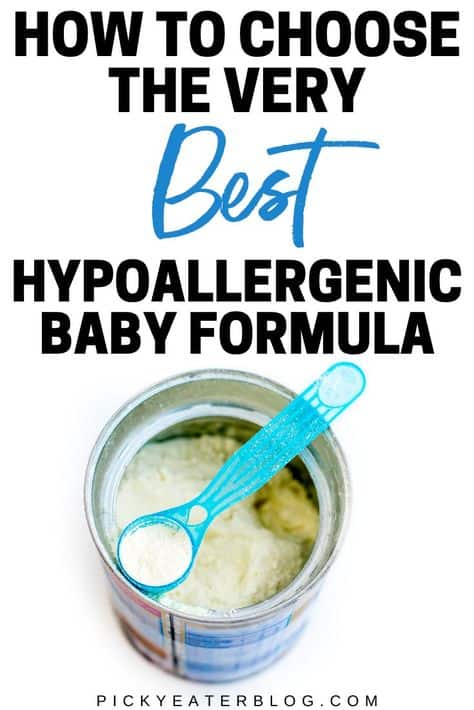



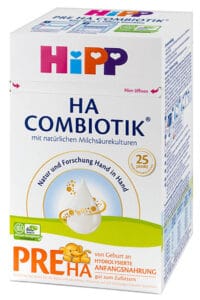
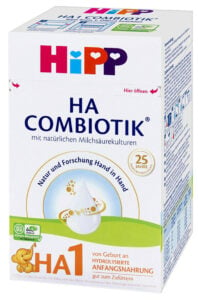
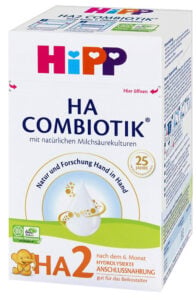
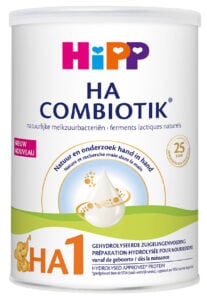
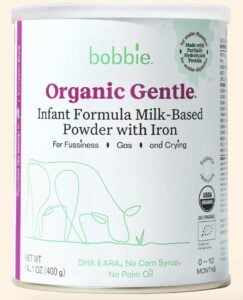
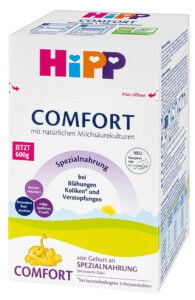
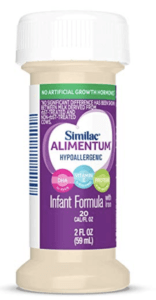
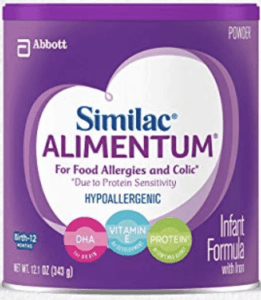
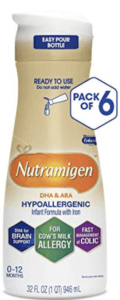
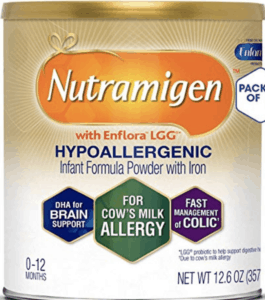
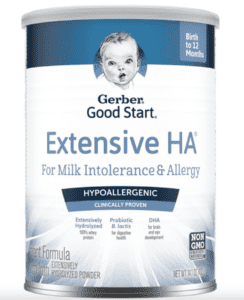
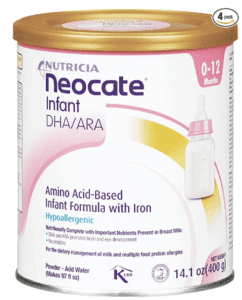
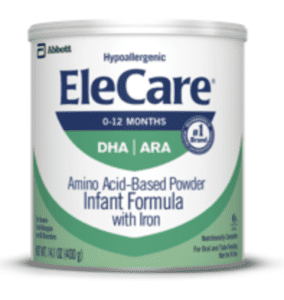
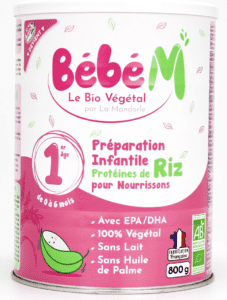
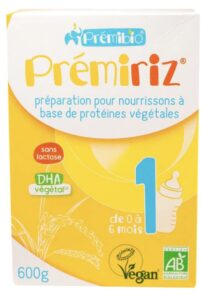
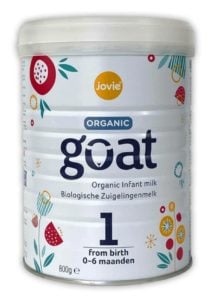
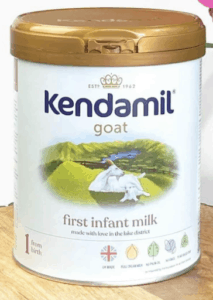
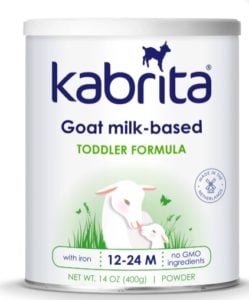
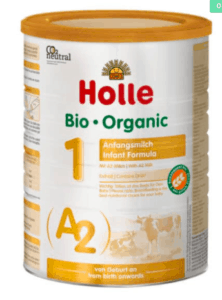
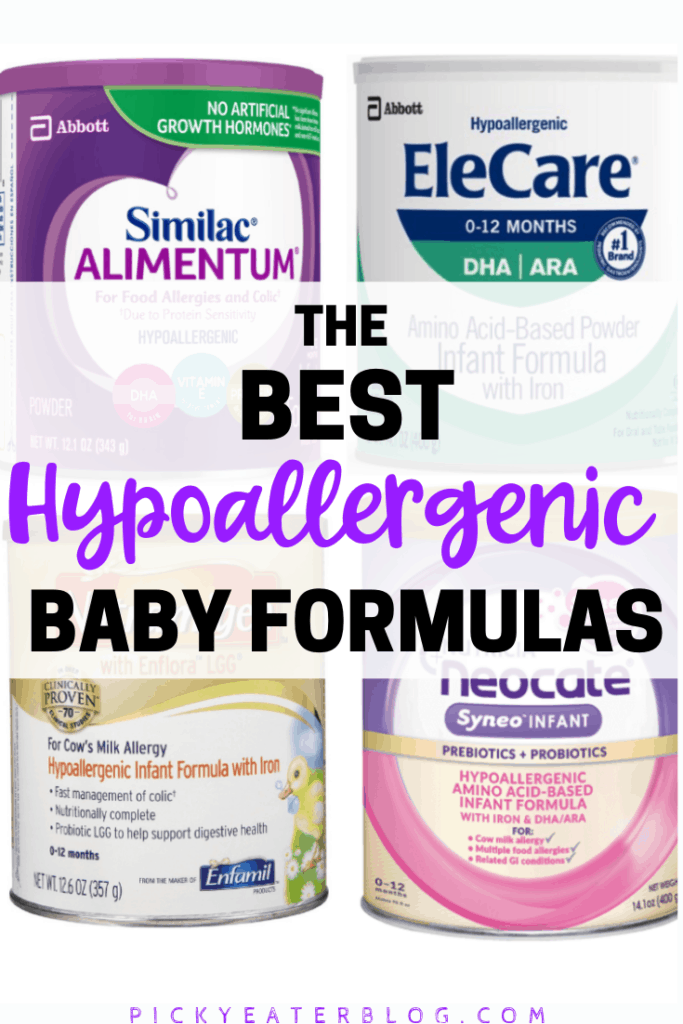

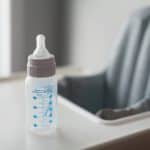
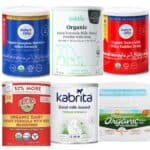




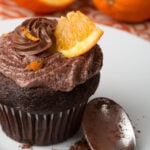
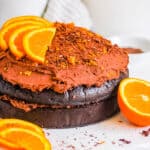
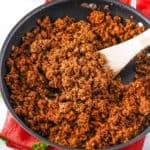
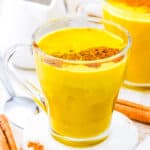
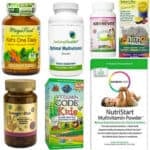
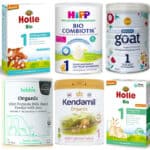



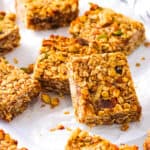




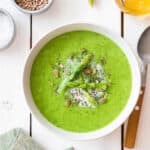
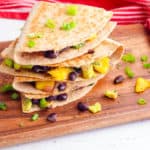



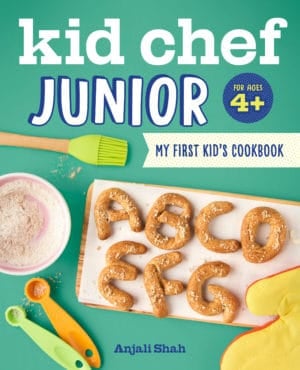

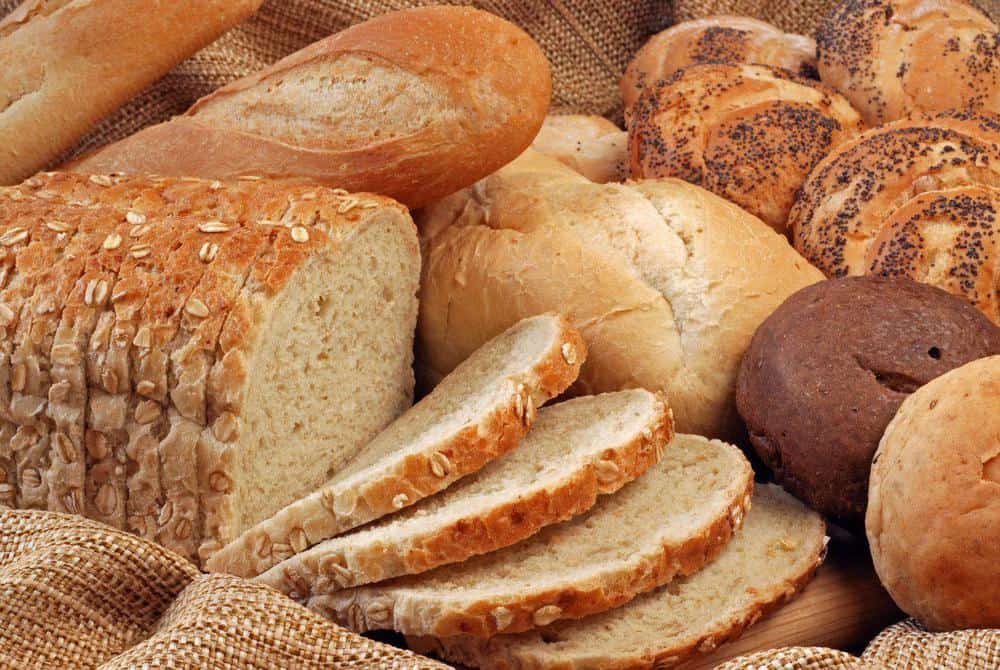
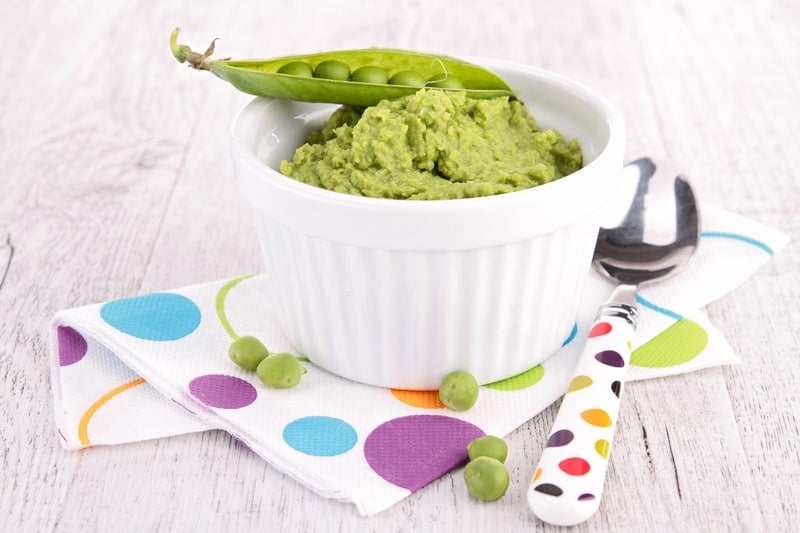
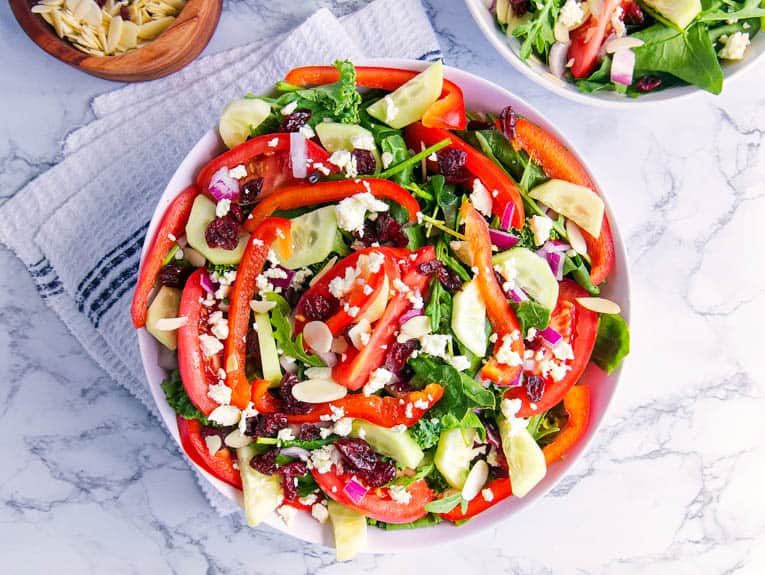


Do you know anything about the company: organicbabyfoodwholesale?
Also, what are your thoughts on the new law making the import and sale of baby food from Europe illegal?
Hi Mel! I don’t know much about them unfortunately! To your other question – what law are you referring to?
My son is now 3 months and originally started with gentlease and he had would not burp or pass gas, spitting up a lot, and was so uncomfortable. We then switched to soy and he was then able to pass gas and burp but still spitting up a ton and very constipated. Doctor recommended us then try nutramigen and he was spitting up non stop and had nonstop diarrhea. Doctor said we should go back to soy and add prune juice to help with the constipation but he is so uncomfortable all the time. Just wondering if you would recommend us trying one of the HiPP formulas? The doctor said we could try alimentum next but I’m just not sure. I don’t feel good about him being on soy for the rest of the time though. Any advice is much appreciated!
Hi Christina! Gentlease and soy formula both have a ton of irritants in them that can cause all of the problems you mentioned. And Nutramigen is even worse if your baby hasn’t been diagnosed with a milk protein allergy! I would definitely recommend trying HiPP Dutch Stage 1 to start and seeing how that goes. I’d introduce it slowly — over a period of 1 week in increasing amounts to ease the transition. And then if HiPP Dutch doesn’t work I’d try HiPP HA. Hope that helps, and I hope your little guy feels better soon!
Hello, I’m just having such a hard time finding the right formula for my 2 month old. She was a NAS baby bc i had to take pain meds while pregnant due to a medical condition. I’ve tried everything, all formulas. She has horrible gas pains, spits up, projectile vomits, clinches whole body after eating and more. I really need help finding a good formula. I’ve tried hipp and holle hypoallergenic and goat milk products. Nothing seems to be working. I love hipp brands bc i truly believe they have the best ingredients. Can you please help me find a good formula for my LO’s super sensitive stomach.
Hi Amanda! I’m so so sorry to hear about all of your struggles with your little one’s digestive system! That must be so stressful! Have you had her tested for a milk protein allergy yet? If not, I’d do that asap. You mentioned you’ve already tried HiPP HA and Holle Goat, have you also tried HiPP Comfort? If so, then you might have no choice but to go to an amino acid formula like Neocate or Elecare. Because HiPP Comfort is the most broken down European formula available, so if that’s not working then Neocate or Elecare are your only options. But the first thing I’d do is get her tested for a milk protein allergy, and then ask your pediatrician if Neocate or Elecare makes sense as a next step. I hope you find something that works for her asap!
My son is 6 months old. We have always formula fed him. I started Holle and noticed he had a lot of gas and also very constipated. I then switched him to Hipp Pre HA and it worked well for him. He was more regular and not fussy after eating. Since he turned 6 months, I put him on regular
Hipp formula but he has become extremely constipated. I have ordered more Hipp Ha Pre and Hipp Ha 1. In the meantime, I’ve bought alimemtum until those come in.
My questions are do you think he has a milk allergy and that’s why he gets constipated? And do you think the Hipp HA 1 will be harder on his digestion than the Hipp Ha Pre? He is 6 months so I am assuming he can’t stay on the pre much longer for nutritional purposes.
Thank you for your blog site!
Hi Linsday! I’m so sorry your son has had trouble with some of the “regular” formulas — it does sound like his digestive system just might be slightly more sensitive than the average baby. Since it sounds like constipation is his main issue, and he doesn’t have any other symptoms, it’s hard to know whether he has a milk allergy or not without getting him tested. I would recommend getting him tested just to be sure — it could just be that his digestive system needs more time to mature and he’ll grow out of it, or he could have an actual milk protein allergy. Regarding the formula itself, I think you should be fine with HiPP HA 1. That is still super super mild compared to regular formula and it is extensively hydrolyzed just like HiPP HA PRE. If it doesn’t work let me know and I can help you find an alternative! Hope that helps!
My baby is going to turn 8 month soon he is allergic to milk protein nuts and egg, he is currently on similac alimentum rtf formula he is doing ok with it but still have eczema and not thriving very well since on it very slow to gain weight. So I was going to try a amino based formula for him but heard great things about HiPP HA and COMFORT formula which one of these you would suggest me trying for my baby
Hi Michelle! Since your baby has a diagnosed milk protein allergy, I’d recommend HiPP Comfort since it is the most broken down European formula available. If that doesn’t work for your little one then you will likely have to switch to an Amino Acid based formula like Neocate. I hope that helps!
Hi Anjali thank you for your reply but one more question I son didn’t do well with the alimentum powder he would have red rash I guess he is probably not tolerating the corn in the powder do you know if the Hipp HA and Comfort have corn in it.
Hi Michelle! HiPP HA and HiPP Comfort both do not have corn in it – so you should be fine with either one!
My daughter is 4 months old with moderate but worrying eczema and cradle cap but mild digestive issues. I suspect a casein allergy or sensitivity because I have a casein sensitivity and a history of allergies. Do you suggest HIPP comfort or start with with Hipp HA or amino acid formula?
Hi Sophie! Honestly I’d first get her tested to confirm an allergy. If you can’t get her tested or can’t confirm an allergy but the symptoms persist, then I’d start with HiPP HA since that’s the least broken down of the options — and if that doesn’t work then move to HiPP Comfort — and if that doesn’t work then move to an amino acid formula. But hopefully, if she doesn’t have a diagnosed milk protein allergy, HiPP HA will be all that you need!
my son has severe GERD and is likely from a cows milk allergy.
My question is, which would be best for him?
Hipp HA
Hipp Comfort
Goats milk
When would you choose goats milk over the other 2 Hipp options?
Hi Kristin! So sorry to hear about your son’s reflux – that must be so stressful! Has your son been diagnosed with a milk allergy yet? Or has he been tested but came up negative? If he has a diagnosed milk protein allergy I’d recommend going straight to HiPP Comfort because it’s the most broken down of all the formulas. If he hasn’t been diagnosed, I’d start with Kabrita USA. The reason I’d choose Kabrita over the HiPP Hypoallergenic options is that it’s organic (you can’t make organic hydrolyzed formula which is what HiPP HA and HiPP Comfort are). But Kabrita may not work well for babies with diagnosed milk protein allergies – in which case, depending on the severity of the allergy you’d want to use HiPP HA (for less severe allergies) or HiPP Comfort (for more severe allergies). I hope that helps, let me know if you have any other questions!
Thank you for the blog posts. My wife and I have found them very beneficial for our 8 week old son. I was hoping you could clarify is this paraphrased statement in your post: The EU formulas are better than US because they do not have maltodextrin. However, the second ingredient in the UK Hipp Comfort is maltodextrin (excerpt at bottom of my comment).
Is there a difference between the ‘corn maltodextrin’ in Alimentum and just ‘maltodextrin’ in the Hipp UK Comfort? If so, what is it?
Also, does Hipp ever list the % of ingredients like the US based formulas do (e.g., Alimentum is 35% ‘corn maltodextrin’) so you can evaluate the amount of ingredients like ‘Maltodextrin’ in their product?
Hipp UK Comfort Ingredients:
Vegetable oils with beta palmitate (palm kernel oil, palm oil, rapeseed oil, sunflower oil), maltodextrin, lactose, whey protein hydrolysate, starch,…
Hi Andrew! Great question! So yes, overall the majority of EU formulas don’t have maltodextrin compared to the majority of US formulas which do (that was more a general statement about all EU vs. all US formulas – not specifically about hypoallergenic formulas). But when you get into hypoallergenic formulas the standards change because the ingredients are more limited in terms of what can be safely used in a hypoallergenic formula. HiPP HA doesn’t have maltodextrin, but it has the same lactose content as a regular formula which is why they can avoid the maltodextrin. HiPP Comfort not only is hydrolyzed but it has a reduced lactose content, so they make up for it by adding maltodextrin. Not ideal, but again – choosing between imperfect options when you’re looking at a hypoallergenic formula. As for the amount of maltodextrin in HiPP Comfort, I unfortunately don’t have information on the % of maltodextrin – HiPP doesn’t list that from what I’ve found. However, just based off the order of the ingredients — it’s standard to list the ingredient with the highest quantity first — HiPP Comfort lists maltodextrin second, vs Alimentum for example which lists it first. That leads me to believe that it’s likely that HiPP Comfort has less maltodextrin than Alimentum, or at the very least – the same amount. I hope that helps! Let me know if you have any other questions!
Hi Anjali,
We’ve discovered that our 4 month old has a dairy sensitivity (Invisible blood in the stool and overall gassiness and trouble with sleep) I’ve been trying to wean off the pump (exclusively pumping, he doesn’t suck effectively) My dr. recommended Alimentum and we’ve been giving it to him for a few days, mixed with breastmilk, but it’s just so disgusting and it also gave him wicked, green diarrhea. I ordered Hipp HA before I came across your article about Hipp Comfort. Our doctor thinks his sensitivity is mild and, even with the diarrhea, he’s doing tons better on alimentum already. I tried to give him Holle goat but he spit up more than he’s ever done and he only had about 4oz, so we switched back to alimentum. I feel terrible giving it to him and it’s making me feel selfish for trying to wean. 🙁
Hi Sofia! First, I just want to say, please try not to feel guilty or selfish for trying to wean!! Exclusively pumping for 4 months is HEROIC. And getting as far as you have is wonderful – 4 months of breastmilk has been great for your little one! If you feel like you will be a better mom and a healthier mom after weaning, then it is the right decision for you. HiPP HA is a close match to Alimentum since both are extensively hydrolyzed so I think it’s certainly worth trying HiPP HA to see if his poop improves. And if not you can always go to HiPP Comfort and try that too. Allergies are tough, so it’s just a matter of trial and error to see what works best. Hope that helps, let me know if you have any questions!
Thank you so much for your fast reply and encouraging words. <3
No problem at all! ❤️
We tried Hipp HA and he didn’t do well on it. His poops returned to the consistency it had when he was on regular hipp combiotik and his spit up got worse. He was only on it for a couple of days. His doctor doesn’t think that it’s a lactose problem, as he’s fine with breastmilk. I’m thinking he’s sensitive to Whey, in which case sounds like our only choices are alimentum or nutrimigen. That just breaks my heart. 😩 do you have any opinions on the ready to feed alimentum? It seems to have less sugar, no corn and almost no soy. I’ve also read that smell is better. I don’t know what to do here, since I don’t have enough milk. Really don’t want to increase how much I pump again. 😭 Thank you.
Hi Sofia! Awww man that is really too bad!! Poor guy!! And yes the Alimentum RTF is definitely better than the powdered version when it comes to sugar, soy, maltodextrin – which is so interesting because usually RTF is worse! The RTF version does have carrageenan though, which is linked to many forms of inflammation and can cause digestive issues. So I think it’s honestly a toss up between the two — less sugar and soy vs. carrageenan? I really don’t know which one I’d pick! I might just alternate between the two to reduce the sugar/soy overall but also not give too much carrageenan. Hope that helps and I hope your little one finds some relief!
Hi Anjali,
Words can’t explain how grateful 🙏 and thankful I am for coming across your blog. Thank you for blessing others’ with such amazing information. My question to you is I ordered HIPP HA formula from Bottles and Burps on Monday but as I was reading some of your reviews, I realized I should have ordered HIPP Comfort. My 3 month old son has a very sensitive digestive system. I know for sure he’s lactose intolerant. I wanted to know can I give him HIPP Comfort and Kabrita goat milk on different days? I had been giving him the HIPP DUTCH for two months and it gives him gas.
I just received my free trial of the Kabrita goat milk today and I tell you he is sleeping well as I type this note to you. Although, I ordered the HIPP HA formula, I also ordered the HIPP Comfort, which will be better for him. I will be receiving the HIPP comfort tomorrow but I would like him to continue drinking the goat milk one day, the next day HIPP Comfort. Is that a good idea?
Hi Siddiya! Thanks so much for reaching out to me and for your kind words! I’m so glad my blog has been helpful for you. To your question, if your son is doing well on Kabrita – I’m thinking that you can just keep him on Kabrita and there’s no real need to switch back and forth between two formulas. Is there a reason why you feel like you should do that if the Kabrita is going well? I don’t think there are any issues with switching back and forth between two formulas – it would be the same as if you were switching between breastmilk and formula on alternate days (no issue there). So you could certainly use both if you wanted to. But for simplicity’s sake, if Kabrita is working well you could also just stick with that! I hope that helps, let me know if you have any other questions! Thanks!
Anjali,
Thanks for the reply. The Kabrita is definitely going well; however, my concern was feeding him 12-24 months Kabrita formula and would he be missing any nourishment for essential growth that a 3 month old should be getting. But after reading more about Kabrita he would be getting what is important for development. I will stick with the Kabrita. Now I have two boxes of the Hipp HA and two boxes of the Hipp Comfort. Should I keep them just in case I run out of the Kabrita? I know for sure I will not be using the Hipp HA has lactose like the Hipp dutch.
Again, thanks for this blog and replying.
Hi Siddiya! Oh good I’m so glad it’s going well and that you’re going to stick with Kabrita! For the other formula, I’d keep HiPP Comfort if you know you could use it if you run out of Kabrita, but if you’re not going to use HiPP HA, then it’s probably worth returning it!
Hi Anjali,
I wanted to give you an update with Kabrita, my almost 4month old baby boy loves the goat milk. He has no more gas and/or fussiness. My life has changed since giving him Kabrita. However, what I was noticing if I put three scoop of formula in his bottle, he wasn’t full. I tried 5, 6 and 8 scoopes. My friend she suggested I add rice cereal in his formula. What I did was added probiotic oatmeal. I put in 2 very small baby spoons. This has been a deal breaker. He sleeps like an angel and moves his bowel every single day. I am using the gerber probiotic oatmeal for babies. I did not want to use it at first but I took the chance. What do you think about gerber probiotic oatmeal? Any other suggestions?
Hi Siddiya! Hooray!!! I’m so happy to hear that! You must be so relieved! The probiotic oatmeal idea is interesting. I looked into the Gerber Probiotic Oatmeal and honestly my only concern is that it’s not organic. Oats/wheat/rice that are not organic are the most likely to be sprayed with Monsanto’s pesticide – Roundup, it’s also more likely to be contaminated with heavy metals. Given all of the research on Roundup I’d want to avoid it as much as possible. I would probably just make oatmeal at home (using organic rolled oats ground up in the food processor) and add in this DHA + this probiotic to it! Hope that helps!
Wow! Thank you, will do! I already have the DHA and will purchase the other items immediately. You are an ANGEL!
Perfect! And no problem at all – I’m so glad I could help! 🙂
Would love your opinion! We have 6 month old twins (4 months adjusted). We are on HIPP PRE HA currently. One of our twins is battling eczema… I know sometimes this can have to do with formula. I plan on utilizing the tips you wrote about regarding natural solutions for eczema, but regarding formula, would you recommend trying HIPP comfort or perhaps a goat milk formula in case of a cows milk sensitivity… ?
Hi Jessica! The main difference between HA and Comfort is that comfort has less lactose — but other than that they are very similar. So if you think it’s a cow’s milk issue, the reduced lactose in Comfort may not make a big difference. I’d recommend trying the natural solutions for eczema first and seeing if that helps, and then if it doesn’t maybe try a goat milk formula since that will tell you if cow’s milk is the issue! Hope that helps, let me know if you have any other questions!
Just curious, which comfort are you referring to in this blog? (UK or German)
Thank you for all you do!!!
I was referring to the UK one, just because the instructions on the box will be in English 🙂 But they are virtually identical so either is ok!
Hi – I don’t see HA Comfort as an option to purchase? I see HA-pre and HA-1 and HA-2. Do you know how these differ and what is best for a milk protein and soy allergy for a 4 week old? It looks like HA-1 has Soy
Hi Cammie! There are two separate formulas actually – there’s HiPP HA, which you can purchase here, and HiPP Comfort, which you can purchase here. HiPP HA doesn’t have soy (you can see the ingredients here – just scroll down on that page), so you should be fine there. Hope that helps!
So thankful for this article!!!
Thank you so much Elizabeth! 🙂
Hi there! Thank you for your helpful post. My 4 month old is allergic, we had a blood test done and is specifically allergic to alpha lactalbumin (whey). He is not allergic to casein protein. Alimentum is casein hydrolsate. I ordered HiPP HA Pre which is whey hydrolsate. The allergist that we are seeing is very conservative and hesitant about HiPP HA for my son since it’s whey hydrolyzed. Would love your thoughts as I would like to get him off of Alimentum. He does ok with alimentum, but doesn’t have regular bowel movements. Thank you!
Hi Mia! That’s a great question! In general, I’d recommend deferring to your allergist and pediatrician. Is your allergist hesitant about HiPP HA because she thinks your son might have a reaction to it? Or does she think he definitely will have a reaction to it? What does your pediatrician think? Is there a way to give him HiPP HA in a controlled environment – e.g. at the doctor’s office, in a very small or diluted quantity, and have him monitored to see if he reacts? Because if you can “test” that scenario while being supervised by your allergist or doctor, then you’ll know for sure whether HiPP HA will work for your son and you won’t risk an allergic reaction in your home where you don’t have as many resources. If I were you, I’d ask your allergist how concerned they are that he’ll have a reaction, I’d get your pediatrician’s thoughts, and then I’d ask for a test in the doctor’s office with HiPP HA to see if he will react or not. Hope that helps, let me know if you have any other questions!
Hi My six month old has milk / eggs / wheat/ peanuts / almonds allergic – and also really bad eczema. we have him on Elecare – for 2 months now (but it seems to be that he is not gaining any weight ) and it is very difficult to feed him. What other formula do you recommend that’s safe and for weight gain
Hi Lucy! I’m so sorry to hear about your little one’s allergies – that can be so stressful! Regarding Elecare — did your pediatrician recommend an amino acid based formula for him? E.g. is his milk allergy so severe that he won’t be able to tolerate an extensively hydrolyzed formula (the equivalent in the US would be Alimentum)? If that’s the case, then unfortunately Elecare and Neocate are your only options. But if you haven’t tried an extensively hydrolyzed formula yet, then I’d recommend HiPP Comfort as long as your pediatrician is ok with it! Hope that helps and I hope you find something that works soon!
Hello, I’ve been struggling to find a hydrolyzed formula for my son that he will actually take. We’ve tried alimentum and it smells terrible. He absolutely wants nothing to do with it. I’ve been nursing since he was born (he is now 6 months) but he has always had a weak latch and now I believe I am not producing what he needs to satiate him. I am desperate to find a hydolyzed formula that tastes good or that is tolerable. I am fearful that my son will fail to thrive if I dont find something that will satisfy him and be nutritious at the same time. Does hipp comfort taste good or at least better than alimentum or nutramigen? My son seems to have a severe allergy to cows milk protien.
Hi Vanessa! I didn’t have to use HiPP Comfort for my kids personally, but I have heard from other moms that HiPP Comfort tastes and smells better than Alimentum or Nutramigen. It’s still extensively hydrolyzed so it won’t smell like regular formula, but it shouldn’t be as bad as the standard options here in the US. Hope that helps!
Hi Anjali,
I recently tried my son on HiPP HA, and his symptoms of gas and reflux seem to have worsened. I wonder if it is from the lactose. I contacted organic start to ask about HiPP comfort, as it has less lactose. They told me that comfort is only meant to be used as a supplement, not a full source of nutrition. Do you know anything about this? Thank you!
Hi Laura! Great question! HiPP Comfort is considered a “specialty formula” for babies with dairy/lactose intolerances or sensitivities. Oftentimes, babies will outgrow these sensitivities after 6 months of age, so the specialty formula is not “needed” anymore and they can move on to a regular formula. That’s why Organic Start recommends using it for supplementation or for a short period of time. But HiPP Comfort is still nutritionally complete, and can be used as the primary formula for a baby for as long as you need (assuming your pediatrician is comfortable with it!) Hope that helps, let me know if you have any other questions!
Hi Anjali! I’m based in the UK and my son has a mild cow’s milk allergy – rash on his face and bum. I tried Holle goat and he had the same reaction. Then was prescribed Alimentum which is the NHS recommended formula. It smelt disgusting and I immediately took him off it because of the ingredients which I find shocking. I am now using SMA HA which is partially hydrolysed and was easier to find than Hipp HA in the UK (impossible to find) and Hipp comfort. He seems to react ok to the SMA HA. Of Hipp HA, hipp comfort and SMA HA which would you recommend for a CMPA allergy? Which has the healthiest ingredients overall? And if Hipp HA do you know where I might find it in the UK? Thankyou!!
Hi Lydia! I looked at the ingredients for SMA HA and it actually looks pretty clean and comparable to HiPP HA! It has a few more processed ingredients than HiPP HA does (e.g. nucleotides) but it’s way better than Alimentum. I’m not sure where you can find HiPP HA in the UK unfortunately, but I think Dutch Expat Shop will ship HiPP HA to the UK so that’s worth a shot! Hope that helps, let me know if you have any other questions!
Hi,
Do you have an opinion regarding soy based formula? My 2 month old has a likely milk protein allergy (bloody stool) and the pediatrician recommended first trying a soy based formula. I have read conflicting things, and I have concerns about what sounds like estrogen exposure? Would there be a downside to using hypoallergenic instead? Thank you so much!
Hi Laura! Great question – I actually don’t recommend soy based formula, mainly because it’s just a lot of exposure to soy at such a young age – it’s the phytoestrogens in soy that are my main concern.
Here is the research I’ve found to back it up:
1) Weston A Price Foundation: Toxicologists estimate that an infant exclusively fed soy formula receives the estrogenic equivalent of at least five birth control pills per day. By contrast, almost no phytoestrogens have been detected in dairy-based infant formula or in human milk, even when the mother consumes soy products. A recent study found that babies fed soy-based formula had 13,000 to 22,0000 times more isoflavones in their blood than babies fed milk-based formula.
2) PubMed: In a 2011 published study, time-to-menarche was assessed in nearly 3,000 girls. Those girls identified as early soy fed via soy infant formula had a 25% increased risk of menarche specifically in early adolescence.
3) Medical News Today: Research from 2012 published in Biology of Reproduction’s Papers-in-Press describes the effects of plant estrogens found in soy on the mouse oviduct. The study was specifically designed to model the effects of soy-based baby formula on human infants. The results of the study suggest that exposure to estrogenic chemicals in the womb or during childhood has the potential to negatively affect a woman’s fertility as an adult.
4) More along those lines: Science Daily, The NIH, Children’s Hospital of Philadelphia
I don’t think there’s a downside to choosing hypoallergenic, and it’s definitely worth a shot to see if your baby tolerates it! So I’d definitely go with either HiPP HA or HiPP Comfort depending on whether your baby needs a reduced lactose content or not (which is what HiPP Comfort has, HiPP HA has full lactose). Hope that helps, let me know if you have any other questions!
I am looking for a hypoallergenic formula for my son and I spoke to a rep at organic start. She said Hipp HA does not contain casein and is extensively hydrolyzed, similar to alimentum. But in your article you mentioned that it does contain casein and hipp comfort is most like US hypoallergenic brands ?
Hi Jinna! Unfortunately there has been a lot of conflicting information on this, and the best research I had at the time was what I put in the post. But I have verified that what the Organic Start rep told you is correct – HiPP HA and HiPP Comfort are both extensively hydrolyzed and don’t contain casein. The main difference is that HiPP Comfort has a reduced lactose content, while HiPP HA has no reduced lactose. I have updated my post to reflect this! HiPP Comfort is still the closest to US hypoallergenic brands because of the reduced lactose, so that point is still correct. Thanks so much for reaching out! I hope this clarifies things!
Ok thank you! Yes it definitely clarifies things for me. Wouldn’t babies with milk allergies react to any level of lactose in formula even if was reduced ?
Hi Jinna! No problem at all! To your question – it really just depends on the severity of the allergy – some babies with a milk allergy do great on HiPP Comfort, but others need an even further broken down formula like Neocate or EleCare. Every baby is different and reacts differently! Hope that makes sense!
My little one has been on neocate for 4 months.. he was diagnosed with CMPA and soy allergy at 2 months. He refused to drink the Gerber HA so we kept him on neocate. He does well on the neocate but I’m looking to switch him to HIPP. Which one is better for babies with CMPA and which one tastes better?
Hi Jackie! I think I saw your other comment and answered it there, but since your baby is currently on Neocate — that’s an amino acid based formula — so that’s one step further than anything available in Europe. HiPP Comfort is the most hypoallergenic formula available in Europe and that’s closer to Alimentum (extensively hydrolyzed). So you could try HiPP Comfort and see how he does, but if he needs something even more broken down then unfortunately, Neocate is the only option for him!
My 2 month was just diagnosed with a likely milk protein allergy and has had blood in his stool. Which of the two HIPP products would be better for him? Is it ok that they both contain lactose? Thank you!
I’m also wondering the same!
Hi Jackie and Laura! If your baby has been diagnosed with a milk protein allergy, technically, HiPP Comfort is closer to what your baby would be given in the US (e.g. Alimentum or Nutrimagen) since it has no casein, has a reduced lactose content, and is extensively hydrolyzed. As for whether any lactose is ok for your baby that really depends on the severity of their allergy — so I’d talk to your pediatrician about that. I do know that many babies with significant milk protein allergies do well on HiPP Comfort so I’d recommend starting there (as long as your peds is comfortable with it!)
My 4 month old sone was recently diagnosed with a cow milk protein allergy. We tried Nutramigen and it gave him awful tummy problems. The next suggestion was the ready-to-feed Similac Alimentum. It has helped so so much, but I am concerned about the ingredients. I have been reading as much as I can about the imported HA formula, but am still unsure about it. What are your thoughts on the liquid Alimentum??
Hi Natalie! Alimentum is an extensively hydrolyzed formula, which does make it easier to digest for babies. That said, I don’t love the ingredients because the first ingredient is corn maltodextrin (a highly processed, GMO, high glycemic ingredient), and the third ingredient is sugar. HiPP HA also has extensively hydrolyzed whey protein, but does not have a reduced lactose content, so it’s not as broken down as HiPP Comfort. HiPP Comfort is closer to Alimentum since it’s extensively hydrolyzed and has no casein, and has reduced lactose. If your pediatrician is comfortable with it, I’d recommend HiPP Comfort first since it sounds like your little one is very sensitive! Hope that helps!